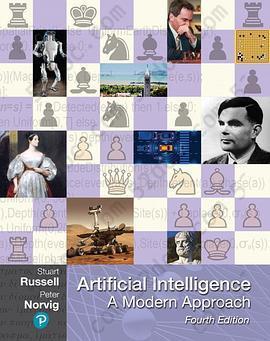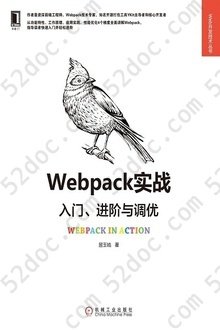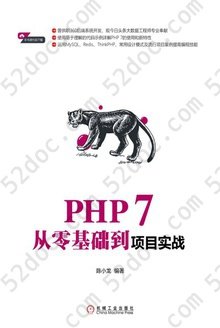注重体验与质量的电子书资源下载网站
分类于: 互联网 云计算&大数据
简介

Artificial Intelligence: A Modern Approach , 4th Edition 豆 0.0分
资源最后更新于 2020-08-23 08:22:41
作者:Stuart Russell
出版社:Pearson
出版日期:2020-01
ISBN:9780134610993
文件格式: pdf
标签: 人工智能 AI 计算机科学 计算机 英文原版 教材 2020
简介· · · · · ·
The most comprehensive, up-to-date introduction to the theory and practice of artificial intelligence
The long-anticipated revision of Artificial Intelligence: A Modern Approach explores the full breadth and depth of the field of artificial intelligence (AI). The 4th Edition brings readers up to date on the latest technologies, presents concepts in a more unified manner, and of...
目录
Part I: Artificial Intelligence
1. Introduction
1.1 What Is AI?
1.2 The Foundations of Artificial Intelligence
1.3 The History of Artificial Intelligence
1.4 The State of the Art
1.5 Risks and Benefits of AI
2. Intelligent Agents
2.1 Agents and Environments
2.2 Good Behavior: The Concept of Rationality
2.3 The Nature of Environments
2.4 The Structure of Agents
Part II: Problem Solving
3. Solving Problems by Searching
3.1 Problem-Solving Agents
3.2 Example Problems
3.3 Search Algorithms
3.4 Uninformed Search Strategies
3.5 Informed (Heuristic) Search Strategies
3.6 Heuristic Functions
4. Search in Complex Environments
4.1 Local Search and Optimization Problems
4.2 Local Search in Continuous Spaces
4.3 Search with Nondeterministic Actions
4.4 Search in Partially Observable Environments
4.5 Online Search Agents and Unknown Environments
5. Adversarial Search and Games
5.1 Game Theory
5.2 Optimal Decisions in Games
5.3 Heuristic Alpha--Beta Tree Search
5.4 Monte Carlo Tree Search
5.5 Stochastic Games
5.6 Partially Observable Games
5.7 Limitations of Game Search Algorithms
6. Constraint Satisfaction Problems
6.1 Defining Constraint Satisfaction Problems
6.2 Constraint Propagation: Inference in CSPs
6.3 Backtracking Search for CSPs
6.4 Local Search for CSPs
6.5 The Structure of Problems
Part III: Knowledge and Reasoning
7. Logical Agents
7.1 Knowledge-Based Agents
7.2 The Wumpus World
7.3 Logic
7.4 Propositional Logic: A Very Simple Logic
7.5 Propositional Theorem Proving
7.6 Effective Propositional Model Checking
7.7 Agents Based on Propositional Logic
8. First-Order Logic
8.1 Representation Revisited
8.2 Syntax and Semantics of First-Order Logic
8.3 Using First-Order Logic
8.4 Knowledge Engineering in First-Order Logic
9. Inference in First-Order Logic
9.1 Propositional vs.~First-Order Inference
9.2 Unification and First-Order Inference
9.3 Forward Chaining
9.4 Backward Chaining
9.5 Resolution
10. Knowledge Representation
10.1 Ontological Engineering
10.2 Categories and Objects
10.3 Events
10.4 Mental Objects and Modal Logic
10.5 Reasoning Systems for Categories
10.6 Reasoning with Default Information
11. Automated Planning
11.1 Definition of Classical Planning
11.2 Algorithms for Classical Planning
11.3 Heuristics for Planning
11.4 Hierarchical Planning
11.5 Planning and Acting in Nondeterministic Domains
11.6 Time, Schedules, and Resources
11.7 Analysis of Planning Approaches
12. Quantifying Uncertainty
12.1 Acting under Uncertainty
12.2 Basic Probability Notation
12.3 Inference Using Full Joint Distributions
12.4 Independence
12.5 Bayes' Rule and Its Use
12.6 Naive Bayes Models
12.7 The Wumpus World Revisited
Part IV: Uncertain Knowledge and Reasoning
13. Probabilistic Reasoning
13.1 Representing Knowledge in an Uncertain Domain
13.2 The Semantics of Bayesian Networks
13.3 Exact Inference in Bayesian Networks
13.4 Approximate Inference for Bayesian Networks
13.5 Causal Networks
14. Probabilistic Reasoning over Time
14.1 Time and Uncertainty
14.2 Inference in Temporal Models
14.3 Hidden Markov Models
14.4 Kalman Filters
14.5 Dynamic Bayesian Networks
15. Probabilistic Programming
15.1 Relational Probability Models
15.2 Open-Universe Probability Models
15.3 Keeping Track of a Complex World
15.4 Programs as Probability Models
16. Making Simple Decisions
16.1 Combining Beliefs and Desires under Uncertainty
16.2 The Basis of Utility Theory
16.3 Utility Functions
16.4 Multiattribute Utility Functions
16.5 Decision Networks
16.6 The Value of Information
16.7 Unknown Preferences
17. Making Complex Decisions
17.1 Sequential Decision Problems
17.2 Algorithms for MDPs
17.3 Bandit Problems
17.4 Partially Observable MDPs
17.5 Algorithms for solving POMDPs
Part V: Learning
18. Multiagent Decision Making
18.1 Properties of Multiagent Environments
18.2 Non-Cooperative Game Theory
18.3 Cooperative Game Theory
18.4 Making Collective Decisions
19. Learning from Examples
19.1 Forms of Learning
19.2 Supervised Learning
19.3 Learning Decision Trees
19.4 Model Selection and Optimization
19.5 The Theory of Learning
19.6 Linear Regression and Classification
19.7 Nonparametric Models
19.8 Ensemble Learning
19.9 Developing Machine Learning Systems
20. Learning Probabilistic Models
20.1 Statistical Learning
20.2 Learning with Complete Data
20.3 Learning with Hidden Variables: The EM Algorithm
21. Deep Learning
21.1 Simple Feedforward Networks
21.2 Mixing and matching models, loss functions and optimizers
21.3 Loss functions
21.4 Models
21.5 Optimization Algorithms
21.6 Generalization
21.7 Recurrent neural networks
21.8 Unsupervised, semi-supervised and transfer learning
21.9 Applications
Part VI: Communicating, Perceiving, and Acting
22. Reinforcement Learning
22.1 Learning from Rewards
22.2 Passive Reinforcement Learning
22.3 Active Reinforcement Learning
22.4 Safe Exploration
22.5 Generalization in Reinforcement Learning
22.6 Policy Search
22.7 Applications of Reinforcement Learning
23. Natural Language Processing
23.1 Language Models
23.2 Grammar
23.3 Parsing
23.4 Augmented Grammars
23.5 Complications of Real Natural Language
23.6 Natural Language Tasks
24. Deep Learning for Natural Language Processing
24.1 Limitations of Feature-Based NLP Models
24.2 Word Embeddings
24.3 Recurrent Neural Networks
24.4 Sequence-to-sequence Models
24.5 The Transformer Architecture
24.6 Pretraining and Transfer Learning
24.7 Introduction
24.8 Image Formation
24.9 Simple Image Features
24.10 Classifying Images
24.11 Detecting Objects
24.12 The 3D World
24.13 Using Computer Vision
25. Robotics
25.1 Robots
25.2 Robot Hardware
25.3 What kind of problem is robotics solving?
25.4 Robotic Perception
25.5 Planning and Control
25.6 Planning Uncertain Movements
25.7 Reinforcement Learning in Robotics
25.8 Humans and Robots
25.9 Alternative Robotic Frameworks
25.10 Application Domains
Part VII: Conclusions
26. Philosophy and Ethics of AI
26.1 Weak AI: What are the Limits of AI?
26.2 Strong AI: Can Machines Really Think?
26.3 The Ethics of AI
27. The Future of AI
27.1 AI Components
27.2 AI Architectures
Appendix A: Mathematical Background
A.1 Complexity Analysis and O() Notation
A.2 Vectors, Matrices, and Linear Algebra
A.3 Probability Distributions
Appendix B: Notes on Languages and Algorithms
B.1 Defining Languages with Backus--Naur Form (BNF)
B.2 Describing Algorithms with Pseudocode
B.3 Online Supplemental Material
1. Introduction
1.1 What Is AI?
1.2 The Foundations of Artificial Intelligence
1.3 The History of Artificial Intelligence
1.4 The State of the Art
1.5 Risks and Benefits of AI
2. Intelligent Agents
2.1 Agents and Environments
2.2 Good Behavior: The Concept of Rationality
2.3 The Nature of Environments
2.4 The Structure of Agents
Part II: Problem Solving
3. Solving Problems by Searching
3.1 Problem-Solving Agents
3.2 Example Problems
3.3 Search Algorithms
3.4 Uninformed Search Strategies
3.5 Informed (Heuristic) Search Strategies
3.6 Heuristic Functions
4. Search in Complex Environments
4.1 Local Search and Optimization Problems
4.2 Local Search in Continuous Spaces
4.3 Search with Nondeterministic Actions
4.4 Search in Partially Observable Environments
4.5 Online Search Agents and Unknown Environments
5. Adversarial Search and Games
5.1 Game Theory
5.2 Optimal Decisions in Games
5.3 Heuristic Alpha--Beta Tree Search
5.4 Monte Carlo Tree Search
5.5 Stochastic Games
5.6 Partially Observable Games
5.7 Limitations of Game Search Algorithms
6. Constraint Satisfaction Problems
6.1 Defining Constraint Satisfaction Problems
6.2 Constraint Propagation: Inference in CSPs
6.3 Backtracking Search for CSPs
6.4 Local Search for CSPs
6.5 The Structure of Problems
Part III: Knowledge and Reasoning
7. Logical Agents
7.1 Knowledge-Based Agents
7.2 The Wumpus World
7.3 Logic
7.4 Propositional Logic: A Very Simple Logic
7.5 Propositional Theorem Proving
7.6 Effective Propositional Model Checking
7.7 Agents Based on Propositional Logic
8. First-Order Logic
8.1 Representation Revisited
8.2 Syntax and Semantics of First-Order Logic
8.3 Using First-Order Logic
8.4 Knowledge Engineering in First-Order Logic
9. Inference in First-Order Logic
9.1 Propositional vs.~First-Order Inference
9.2 Unification and First-Order Inference
9.3 Forward Chaining
9.4 Backward Chaining
9.5 Resolution
10. Knowledge Representation
10.1 Ontological Engineering
10.2 Categories and Objects
10.3 Events
10.4 Mental Objects and Modal Logic
10.5 Reasoning Systems for Categories
10.6 Reasoning with Default Information
11. Automated Planning
11.1 Definition of Classical Planning
11.2 Algorithms for Classical Planning
11.3 Heuristics for Planning
11.4 Hierarchical Planning
11.5 Planning and Acting in Nondeterministic Domains
11.6 Time, Schedules, and Resources
11.7 Analysis of Planning Approaches
12. Quantifying Uncertainty
12.1 Acting under Uncertainty
12.2 Basic Probability Notation
12.3 Inference Using Full Joint Distributions
12.4 Independence
12.5 Bayes' Rule and Its Use
12.6 Naive Bayes Models
12.7 The Wumpus World Revisited
Part IV: Uncertain Knowledge and Reasoning
13. Probabilistic Reasoning
13.1 Representing Knowledge in an Uncertain Domain
13.2 The Semantics of Bayesian Networks
13.3 Exact Inference in Bayesian Networks
13.4 Approximate Inference for Bayesian Networks
13.5 Causal Networks
14. Probabilistic Reasoning over Time
14.1 Time and Uncertainty
14.2 Inference in Temporal Models
14.3 Hidden Markov Models
14.4 Kalman Filters
14.5 Dynamic Bayesian Networks
15. Probabilistic Programming
15.1 Relational Probability Models
15.2 Open-Universe Probability Models
15.3 Keeping Track of a Complex World
15.4 Programs as Probability Models
16. Making Simple Decisions
16.1 Combining Beliefs and Desires under Uncertainty
16.2 The Basis of Utility Theory
16.3 Utility Functions
16.4 Multiattribute Utility Functions
16.5 Decision Networks
16.6 The Value of Information
16.7 Unknown Preferences
17. Making Complex Decisions
17.1 Sequential Decision Problems
17.2 Algorithms for MDPs
17.3 Bandit Problems
17.4 Partially Observable MDPs
17.5 Algorithms for solving POMDPs
Part V: Learning
18. Multiagent Decision Making
18.1 Properties of Multiagent Environments
18.2 Non-Cooperative Game Theory
18.3 Cooperative Game Theory
18.4 Making Collective Decisions
19. Learning from Examples
19.1 Forms of Learning
19.2 Supervised Learning
19.3 Learning Decision Trees
19.4 Model Selection and Optimization
19.5 The Theory of Learning
19.6 Linear Regression and Classification
19.7 Nonparametric Models
19.8 Ensemble Learning
19.9 Developing Machine Learning Systems
20. Learning Probabilistic Models
20.1 Statistical Learning
20.2 Learning with Complete Data
20.3 Learning with Hidden Variables: The EM Algorithm
21. Deep Learning
21.1 Simple Feedforward Networks
21.2 Mixing and matching models, loss functions and optimizers
21.3 Loss functions
21.4 Models
21.5 Optimization Algorithms
21.6 Generalization
21.7 Recurrent neural networks
21.8 Unsupervised, semi-supervised and transfer learning
21.9 Applications
Part VI: Communicating, Perceiving, and Acting
22. Reinforcement Learning
22.1 Learning from Rewards
22.2 Passive Reinforcement Learning
22.3 Active Reinforcement Learning
22.4 Safe Exploration
22.5 Generalization in Reinforcement Learning
22.6 Policy Search
22.7 Applications of Reinforcement Learning
23. Natural Language Processing
23.1 Language Models
23.2 Grammar
23.3 Parsing
23.4 Augmented Grammars
23.5 Complications of Real Natural Language
23.6 Natural Language Tasks
24. Deep Learning for Natural Language Processing
24.1 Limitations of Feature-Based NLP Models
24.2 Word Embeddings
24.3 Recurrent Neural Networks
24.4 Sequence-to-sequence Models
24.5 The Transformer Architecture
24.6 Pretraining and Transfer Learning
24.7 Introduction
24.8 Image Formation
24.9 Simple Image Features
24.10 Classifying Images
24.11 Detecting Objects
24.12 The 3D World
24.13 Using Computer Vision
25. Robotics
25.1 Robots
25.2 Robot Hardware
25.3 What kind of problem is robotics solving?
25.4 Robotic Perception
25.5 Planning and Control
25.6 Planning Uncertain Movements
25.7 Reinforcement Learning in Robotics
25.8 Humans and Robots
25.9 Alternative Robotic Frameworks
25.10 Application Domains
Part VII: Conclusions
26. Philosophy and Ethics of AI
26.1 Weak AI: What are the Limits of AI?
26.2 Strong AI: Can Machines Really Think?
26.3 The Ethics of AI
27. The Future of AI
27.1 AI Components
27.2 AI Architectures
Appendix A: Mathematical Background
A.1 Complexity Analysis and O() Notation
A.2 Vectors, Matrices, and Linear Algebra
A.3 Probability Distributions
Appendix B: Notes on Languages and Algorithms
B.1 Defining Languages with Backus--Naur Form (BNF)
B.2 Describing Algorithms with Pseudocode
B.3 Online Supplemental Material








